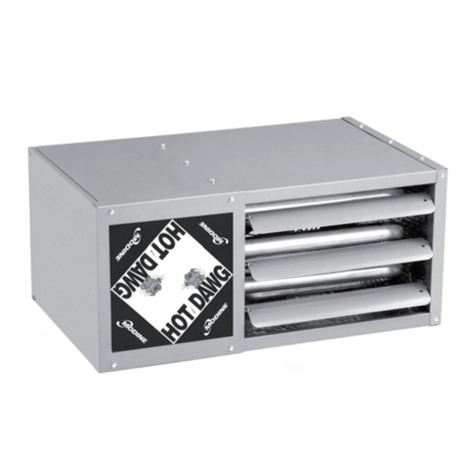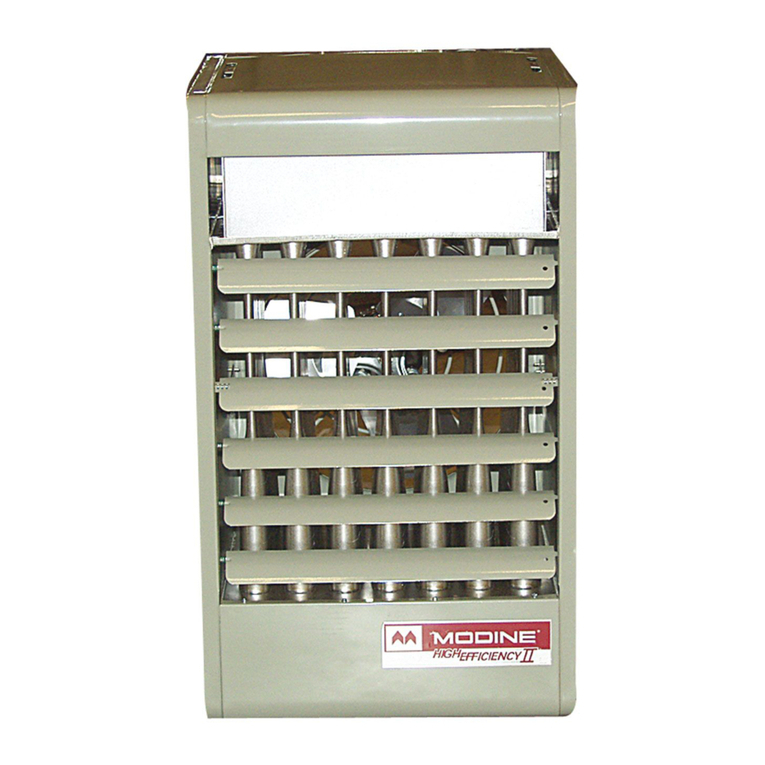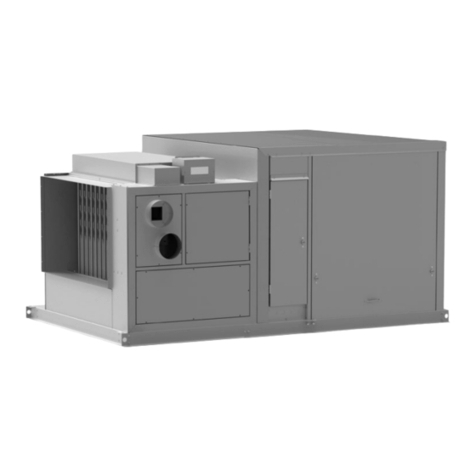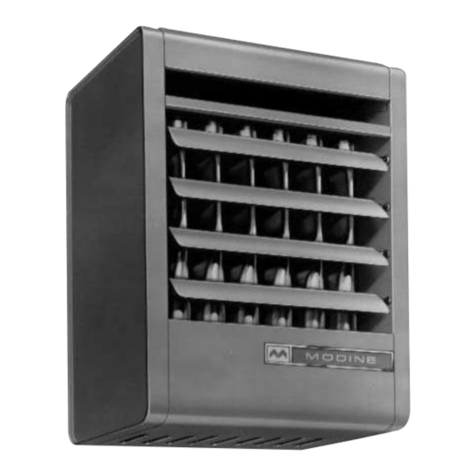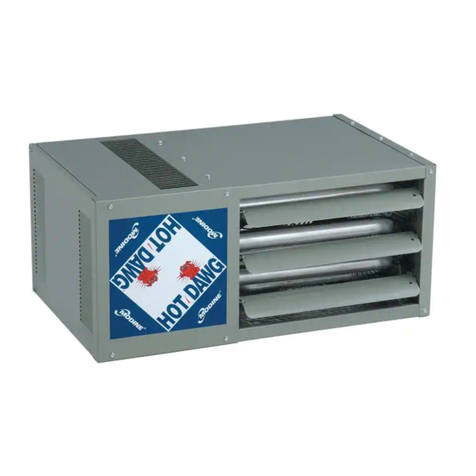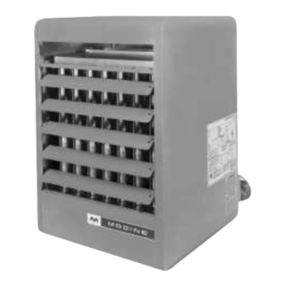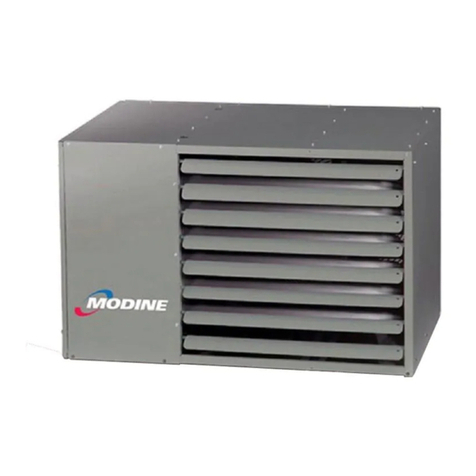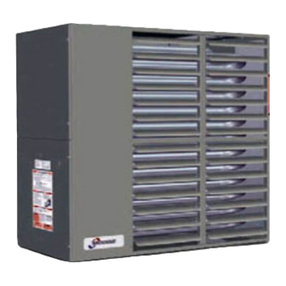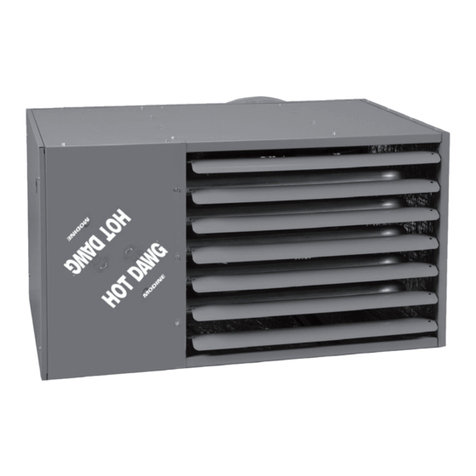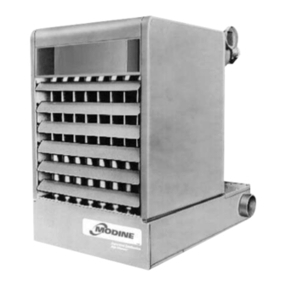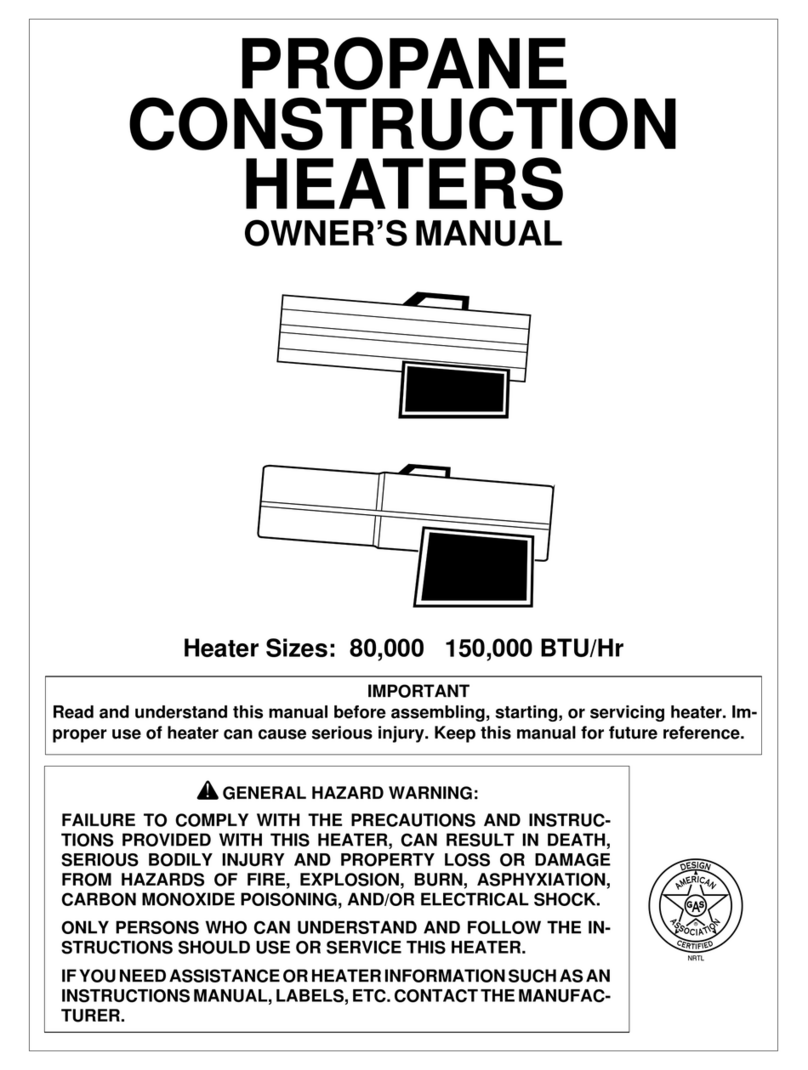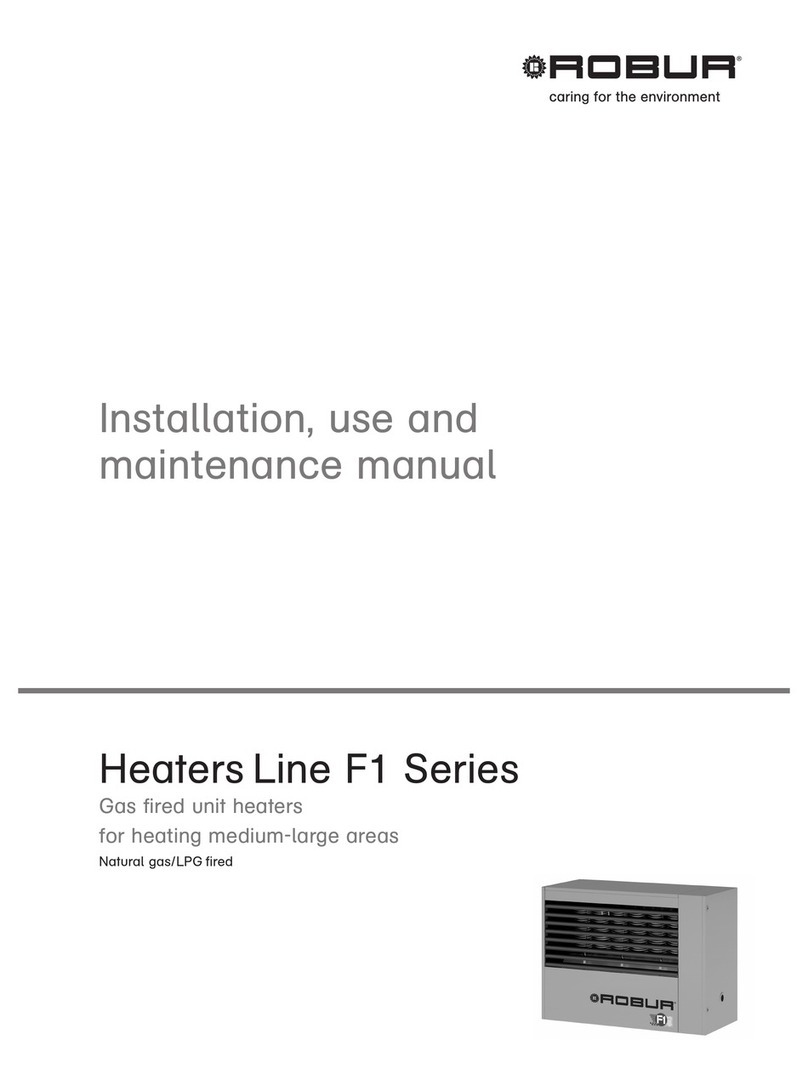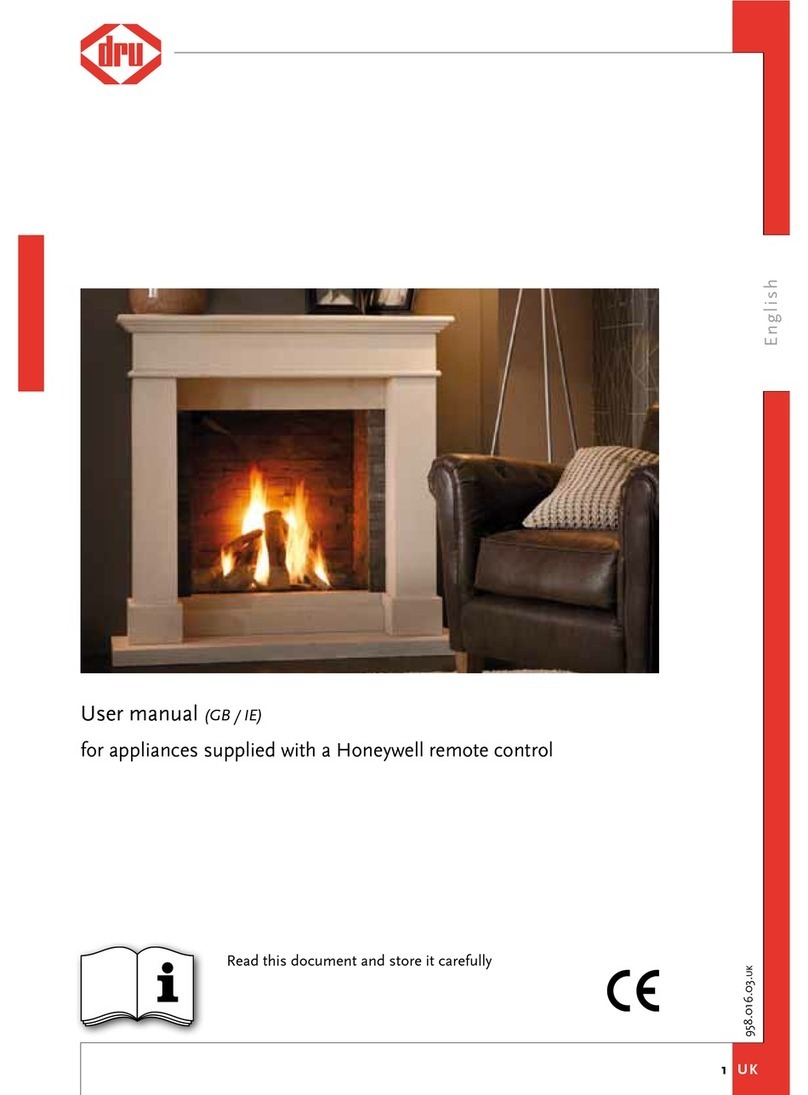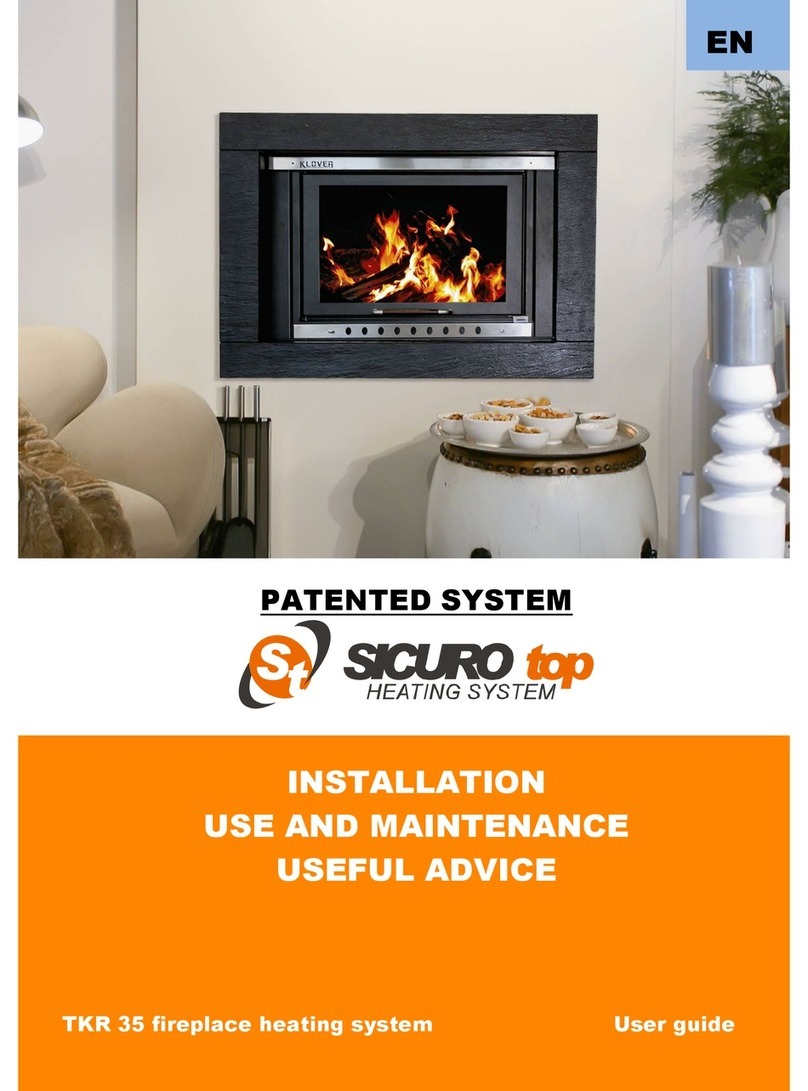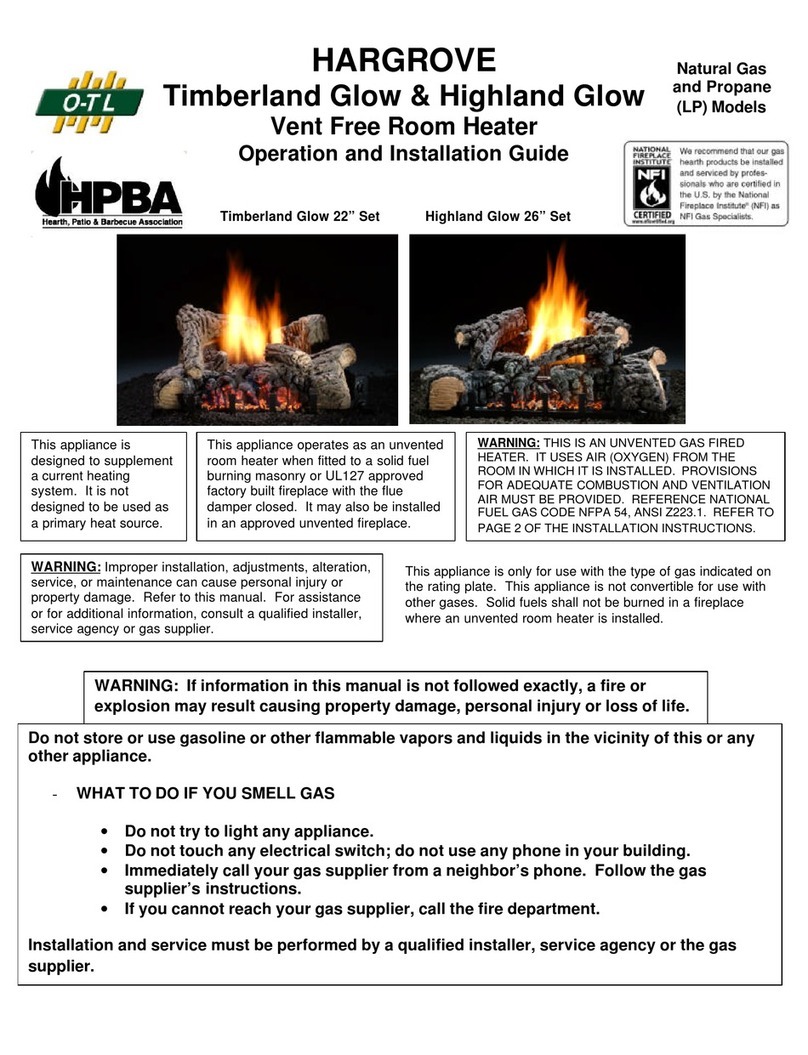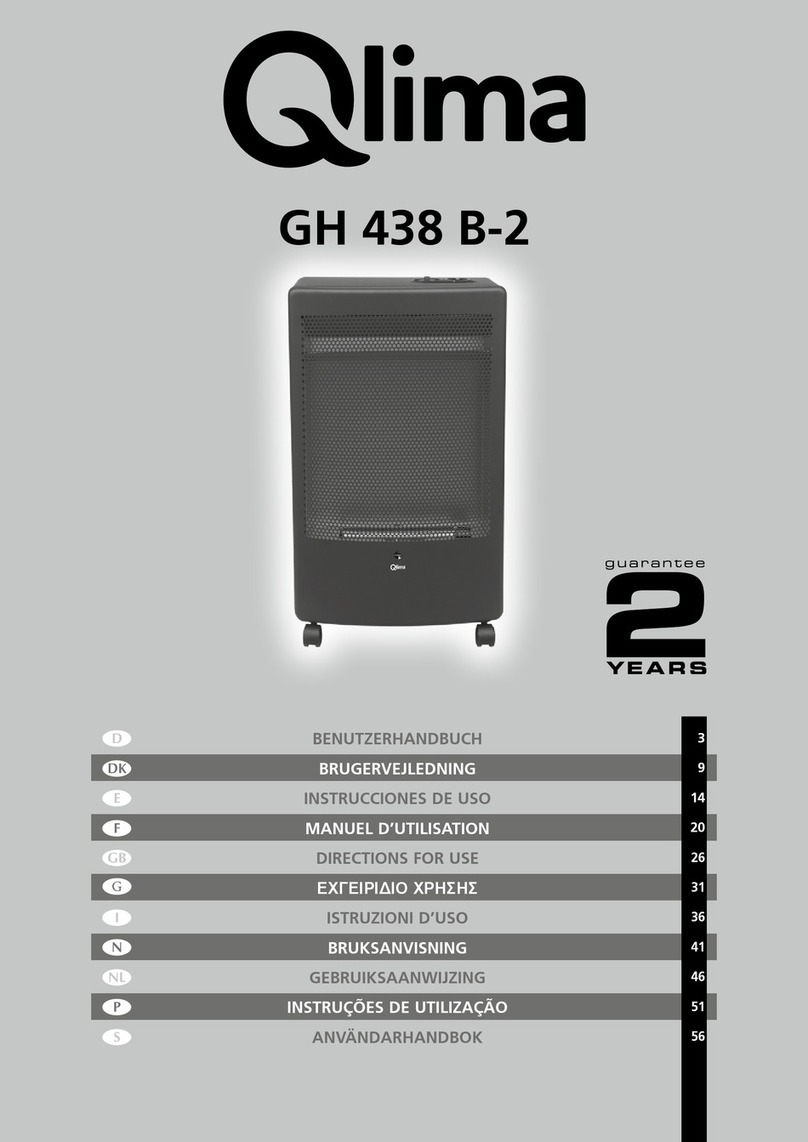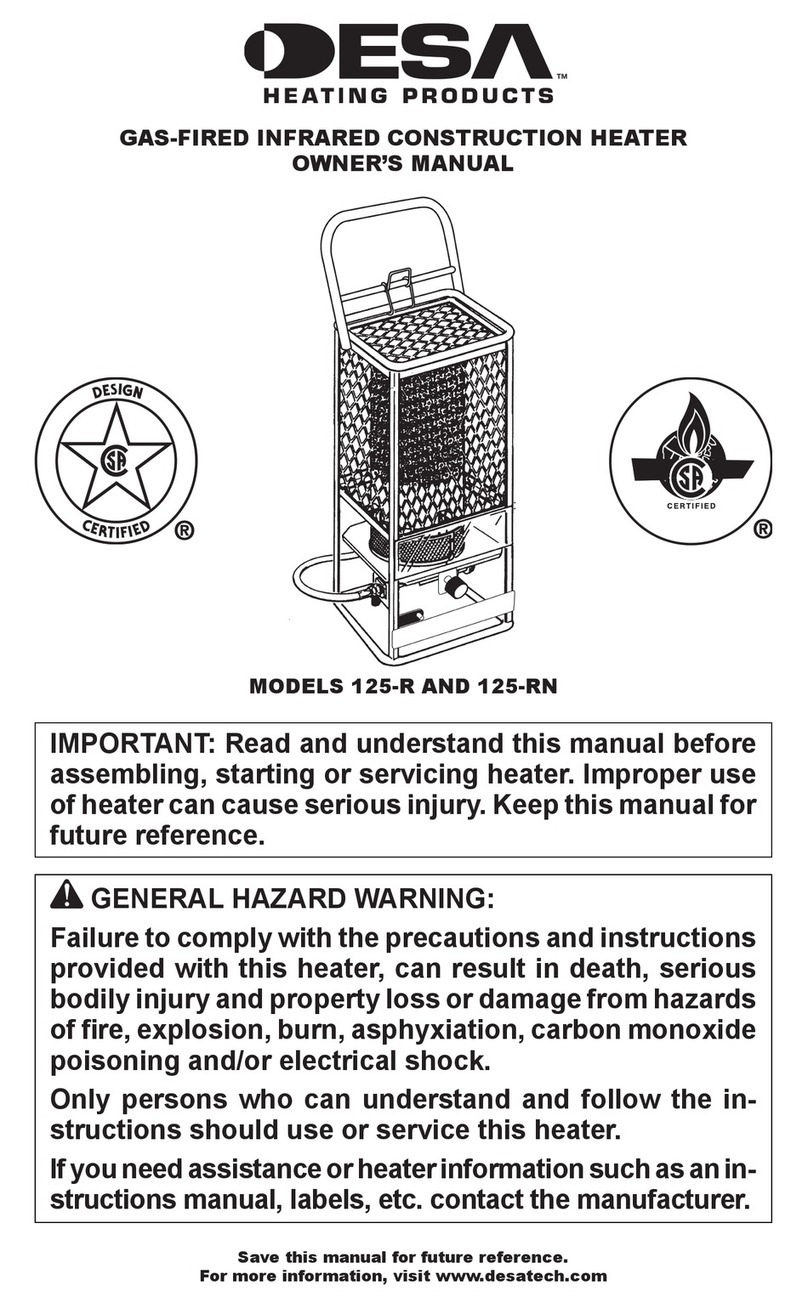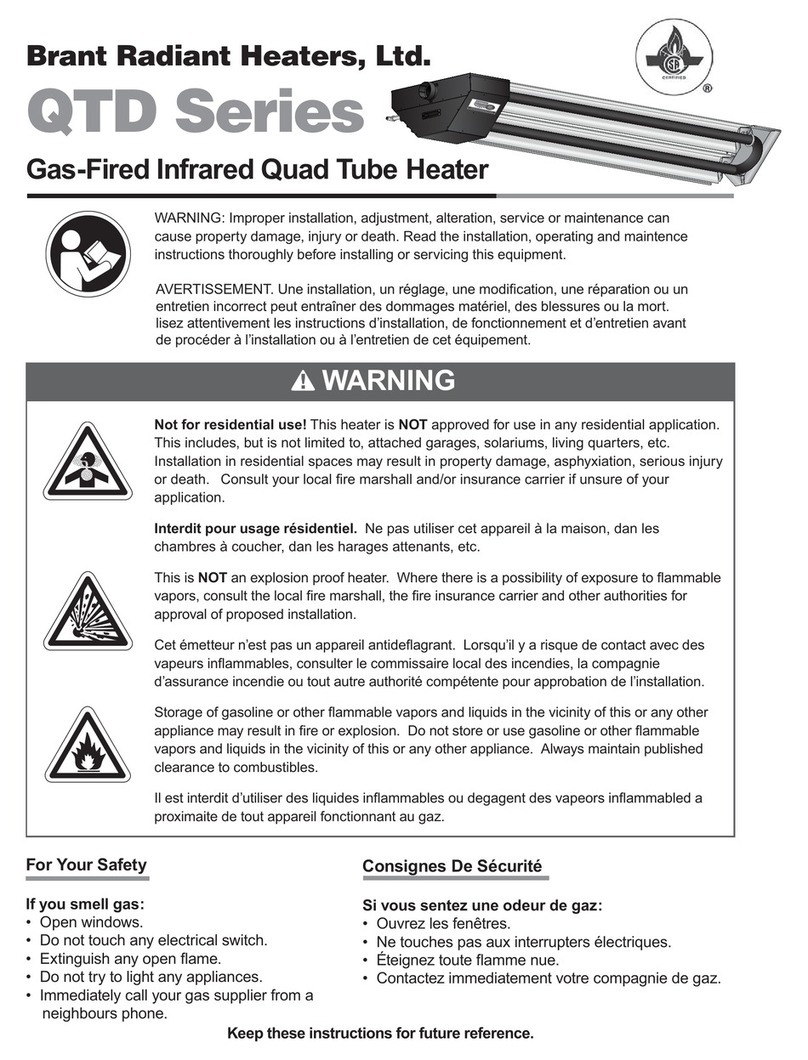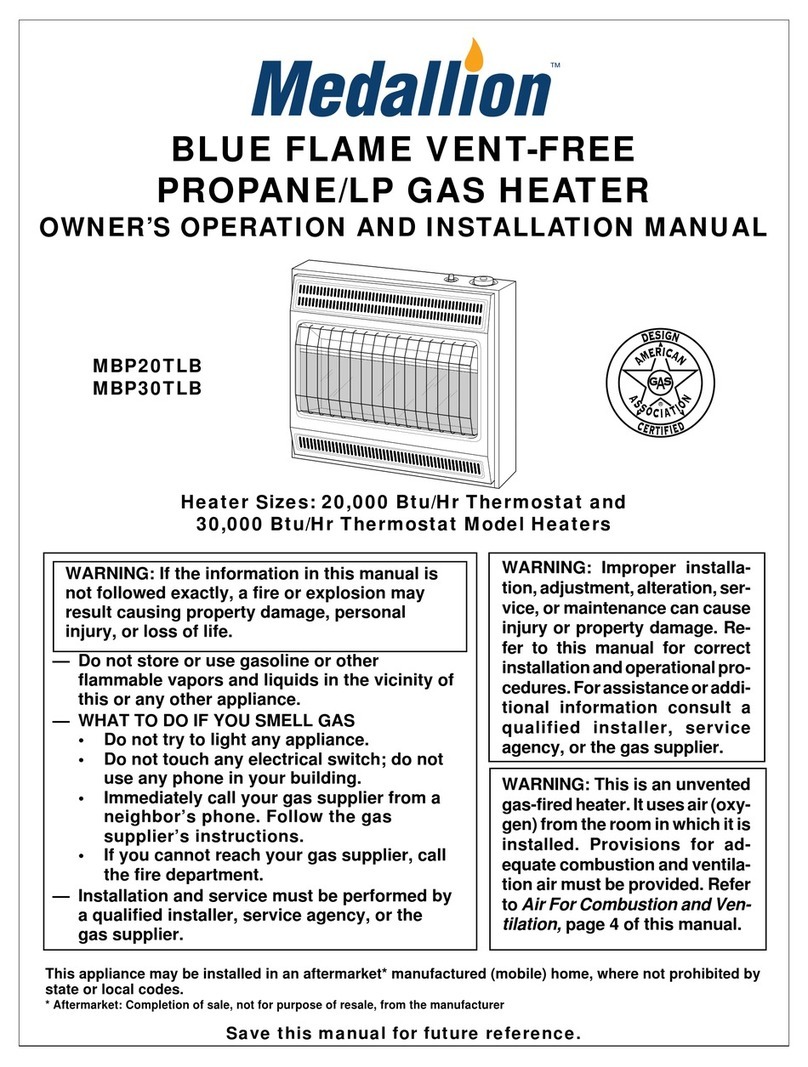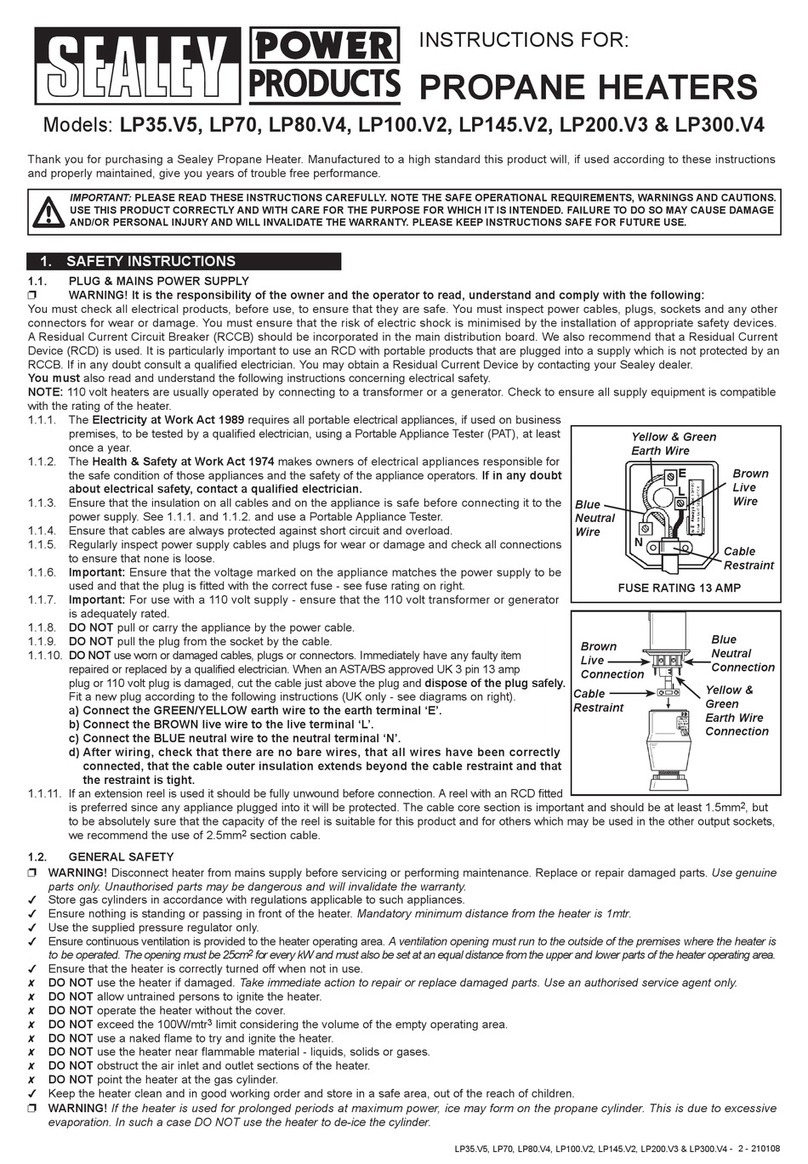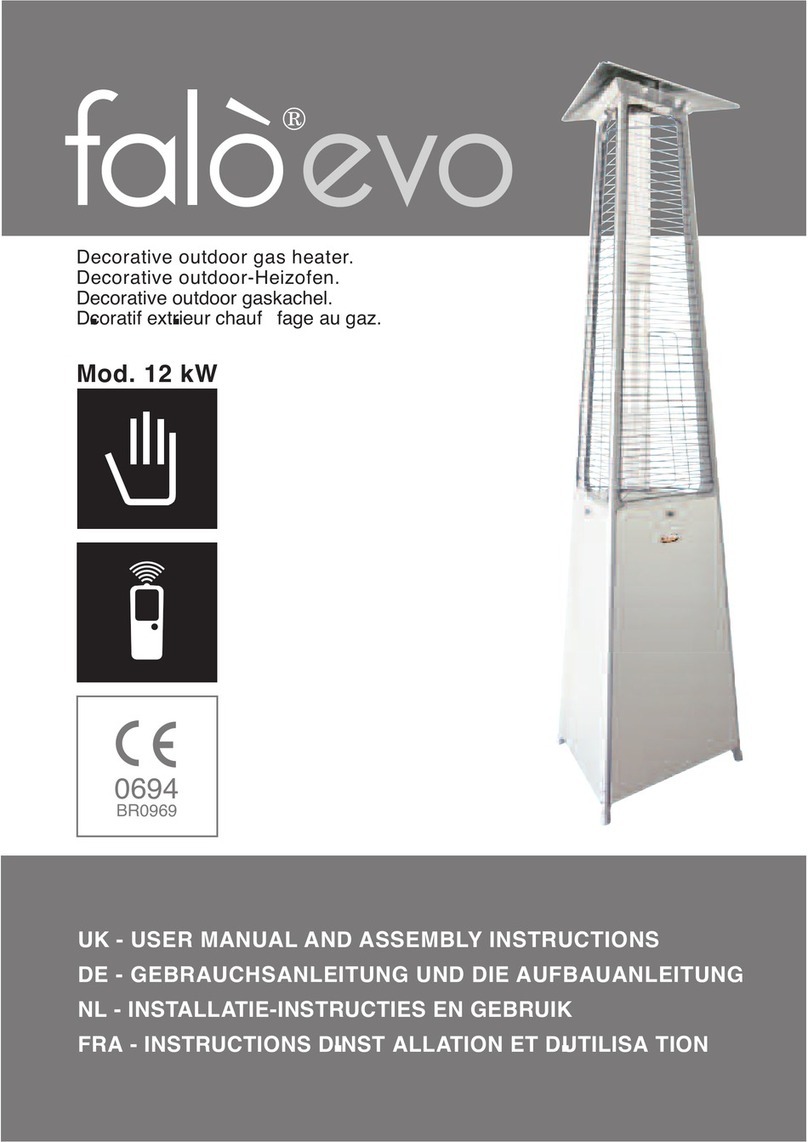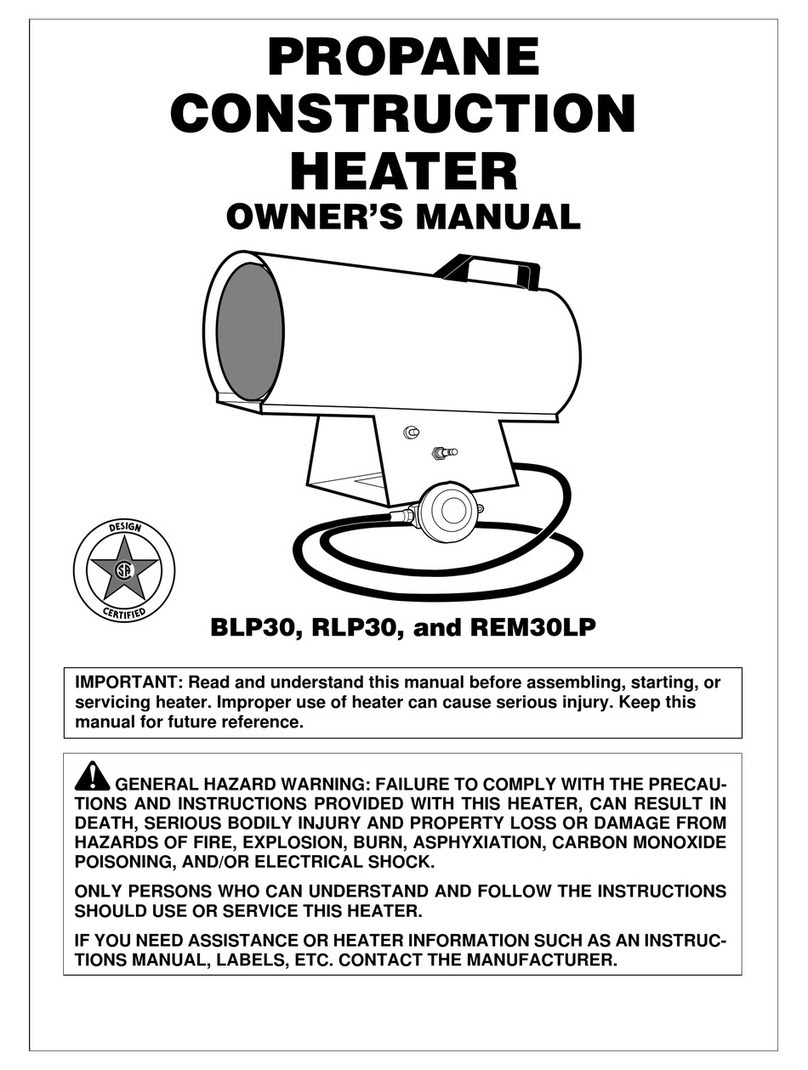In the U.S., the installation of these units must comply with the
“National Fuel Gas Code,” ANSI Z223.1, latest edition (also
known as NFPA 54) and other applicable local building codes.
In Canada, the installation of these units must comply with local
plumbing or waste water codes and other applicable codes and
with the current code CAN/CGA-B149.1, “Installation Code for
Natural Gas Burning Appliances and Equipment” or CAN/CGA-
B149.2, “Installation Code for Propane Burning Appliances and
Equipment.”
1. All installation and service of these units must be performed
by a qualified installation and service agency only as defined
in ANSI Z223.1, latest edition or in Canada by a licensed gas
fitter.
2. This unit is certified by CSA, with the controls furnished. For
replacement parts, please order according to the
replacement parts list on serial plate. Always know your
model and serial numbers. Modine reserves the right to
substitute other authorized controls as replacements.
3. Unit is balanced for correct performance. Do not alter fan or
operate motors at reduced speed.
4. Information on controls is supplied separately.
5. Modine unit heaters use the same burner for natural and
propane gases.
LLooccaattiinnggUUnniittHHeeaatteerrss
In locating units, consider general space-heating requirements,
availability of gas, and proximity to vent locations. Unit heaters
should be located so heated air streams wipe exposed walls
without blowing directly against them. In multiple unit
installations, arrange units so that each supports the air stream
from another, setting up circulatory air movement in the area, but
maintain separation between units so discharge from one unit
will not be directed into the inlet of another. In buildings exposed
to prevailing winds, a large portion of the heated air should be
directed along the windward wall. Avoid interference of air
streams as much as possible.
Mounting height (measured from bottom of unit) at which unit
heaters are installed is critical. Maximum mounting heights are
listed in performance data tables. Alternate mounting heights for
units with deflector hoods or nozzles are also included. The
maximum mounting height for any unit is that height above which
the unit will not deliver heated air to the floor.The maximum
mounting heights must not be exceeded in order to assure
maximum comfort.
Modine unit heaters are designed for use in heating applications
with ambient temperatures between 32° F and 90° F. If an
application exists where ambient temperatures can be expected
to fall outside of this range, contact factory for recommendations.
CCoommbbuussttiioonnAAiirrRReeqquuiirreemmeennttss
Units installed in tightly sealed buildings or confined spaces
should be provided with two permanent openings, one near the
top of the enclosure and one near the bottom. Each opening
should have a free area of not less than one square inch per
1,000 BTU per hour of the total input rating of all units in the
enclosure, freely communicating with interior areas having, in
turn, adequate infiltration from the outside.
UUnniittSSuussppeennssiioonn
The most common method of hanging Modine gas unit heaters
is to utilize 3/8" threaded rod. On each piece of threaded rod
used, screw a nut a distance of about one inch onto the end of
the threaded rods that will be screwed into the unit heater. Then
put a washer over the end of the threaded rod and screw the
threaded rod into the unit heater weld nuts on the top of the
heater at least 5 turns, and no more than 10 turns. Tighten the
nut you first installed onto the threaded rod to prevent it from
turning. Drill holes into a steel channel or angle iron at the same
centerline dimensions as the heater that is being installed. The
steel channels or angle iron pieces need to span and be
fastened to appropriate structural members. Cut the threaded
rods to the preferred length, push them through the holes in the
steel channel or angle iron and secure with washers and lock
nuts or lock washers and nuts. A double nut arrangement can
be used here instead of at the unit heater (a double nut can be
used both places but is not necessary). The entire means of
suspension must of course be adequate to support the weight of
the unit (see page 14 and 15 for unit weights).
For proper operation, the unit must be installed in a level
horizontal position. Clearances to combustibles as specified
above must be strictly maintained. Do not install standard unit
heaters above the maximum mounting height shown in Table 7
on page 13, or below seven feet from the bottom of the unit to
the floor.
For proper operation, the unit must be installed in a level
horizontal position. Clearances to combustibles as specified
above must be strictly maintained. Do not install standard unit
heaters above the maximum mounting height shown in
performance data tables, or below seven feet from the bottom of
the unit to the floor.
On all propeller units, except the PV300, PV350 and PV400, two
tapped holes (3/8-16) are located in the top of the unit to receive
threaded rod.
Units with two point suspension, models PV30 through PV250,
incorporate a level hanging feature. Depending on what options
and accessories are being used, the heater may not hang level
as received from the factory. Do not hang heaters with deflector
hoods until referring to the “installation manual for deflector
hoods” and making the recommended preliminary adjustments
on the heater. These preliminary adjustments need to be made
with the heater resting on the floor.
PV30 through PV250 units without deflector hoods that do not
hang level after being installed, can be corrected in place.
Simply remove both outer side panels (screws to remove are on
back flange of side panel) and you will see the (adjustable)
mounting brackets (Fig. 2). Loosen the set screws holding the
mounting brackets in place and using a rubber mallet or
something similar, tap the heater into a position where it does
hang level. Re-tighten set screws and replace the outer side
panels.
33
IINNSSTTAALLLLAATTIIOONN
CAUTION
Units must not be installed in potentially explosive, flammable
or corrosive atmospheres.
To prevent premature heat exchanger failure do not locate
ANY gas-fired unit in areas where chlorinated, halogenated or
acid vapors are present in the atmosphere.
CAUTION
For all PV/BV sizes, minimum clearance to combustibles from the
bottom is 12", from the left side 18" and from the right side 6".
For PV sizes 30-145 minimum clearance to combustible
materials from the top is 1", clearance for sizes 175-350 is 2",
and clearance for the 400 is 3". For PV sizes 30-100 minimum
clearance to combustible materials from the vent connector is 2",
clearance for sizes 125-300 is 3", and clearance for sizes 350 &
400 is 6". For all BV sizes, from the top and from the vent
connector is 6”. Allow at least 12 inches at the rear, or 6 inches
beyond the end of the motor (whichever is greater), to provide
ample air for combustion and for proper operation of fan. Provide
clearance for opening of the hinged bottom for servicing – See
Figure 1.
